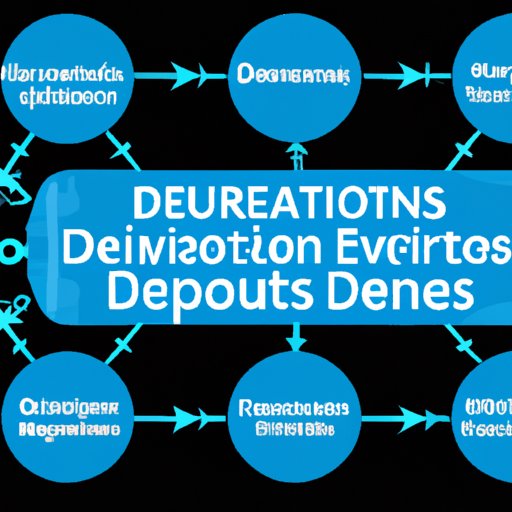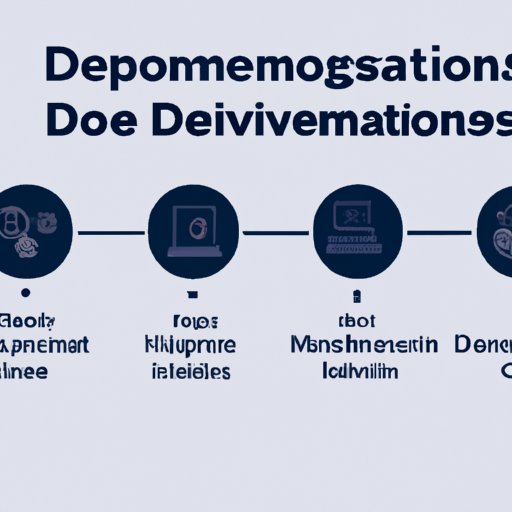Introduction
DevOps automation is a set of tools, processes, and technologies that enable organizations to automate their software development, testing, deployment, and release processes. It is an essential part of any successful DevOps strategy, allowing teams to streamline their workflows and increase efficiency. In this article, we’ll explore the definition of DevOps automation, its benefits, types, role, implementation, best practices, and recent trends in the field.

Understanding the Benefits of DevOps Automation
DevOps automation offers numerous advantages for organizations, including increased efficiency, improved quality assurance, and cost savings. Let’s take a closer look at each of these benefits.
Increased Efficiency
The most obvious benefit of DevOps automation is increased efficiency. By automating manual tasks, teams can reduce the amount of time they spend on mundane tasks and free up resources to focus on more important projects. According to a study by Puppet Labs, “automation can help IT teams complete tasks up to 10 times faster than manual processes.”
Improved Quality Assurance
DevOps automation also helps improve the quality of software releases. By automating tests, teams can identify and fix bugs more quickly and ensure that software meets quality standards. Additionally, automated tests can be run more frequently, allowing teams to catch issues earlier in the development process.
Cost Savings
Finally, DevOps automation can help teams save money in the long run. By automating manual tasks, teams can reduce labor costs and eliminate the need for additional personnel. Furthermore, automation can help teams avoid costly mistakes and ensure that software is released on time and on budget.

Exploring Different Types of DevOps Automation
There are several types of DevOps automation that teams can use to streamline their workflows. The most common types include infrastructure as code, continuous integration/continuous delivery (CI/CD), configuration management, containerization, and monitoring and logging.
Infrastructure as Code
Infrastructure as code (IaC) is a type of DevOps automation that involves writing code to manage and configure hardware and software infrastructure. With IaC, teams can define their infrastructure in a text-based format, such as YAML or JSON, and use version control systems like Git to track changes over time. This allows teams to quickly deploy and manage complex infrastructures with minimal effort.
Continuous Integration/Continuous Delivery (CI/CD)
Continuous integration/continuous delivery (CI/CD) is a type of DevOps automation that helps teams automate the process of building, testing, and deploying software. With CI/CD, teams can define a series of automated processes that will automatically build, test, and deploy new versions of software. This helps teams reduce the time it takes to move from development to production.
Configuration Management
Configuration management is another type of DevOps automation that involves tracking and managing changes to hardware and software systems. With configuration management, teams can define and document the desired state of their systems, making it easier to detect and fix errors. Additionally, configuration management tools can help teams maintain consistency across their systems and ensure that all components are up to date.
Containerization
Containerization is a type of DevOps automation that involves packaging applications and their dependencies into self-contained units. Using containers, teams can easily deploy applications in any environment without worrying about compatibility issues. Additionally, containers make it easier to scale applications and deploy updates quickly.
Monitoring and Logging
Monitoring and logging is a type of DevOps automation that helps teams identify and troubleshoot issues with their systems. With monitoring and logging, teams can collect data on system performance and use it to identify potential problems or areas of improvement. Additionally, monitoring and logging tools can help teams identify security vulnerabilities and respond quickly to incidents.
The Role of Automation in DevOps
Automation plays an important role in DevOps, helping teams automate manual tasks, tests, and deployments. Let’s take a closer look at the different ways teams can use automation to streamline their workflows.
Automation of Manual Tasks
One of the most common uses of DevOps automation is to automate manual tasks. These tasks often involve tedious, repetitive steps that can be difficult to manage manually. By automating these tasks, teams can reduce the amount of time they spend on mundane tasks and free up resources to focus on more important projects.
Automation of Testing Processes
DevOps automation can also be used to automate testing processes. Automated tests can be run more frequently than manual tests, allowing teams to catch issues earlier in the development process. Additionally, automated tests can help teams ensure that software meets quality standards and reduce the amount of time spent on testing.
Automation of Deployment and Release Processes
Finally, DevOps automation can help teams automate deployment and release processes. By automating these processes, teams can move from development to production more quickly and reduce the risk of human error. Additionally, automation can help teams avoid costly mistakes and ensure that software is released on time and on budget.
How to Implement DevOps Automation
Implementing DevOps automation requires careful planning and execution. To get started, teams should begin by establishing goals for their automation efforts and identifying the appropriate tools for their needs. Once these tasks are complete, teams can develop a plan for implementing automation and begin rolling out their new processes.
Establishing Goals
The first step in implementing DevOps automation is to establish goals. Teams should consider what tasks they want to automate, how they want to measure success, and how automation fits into their overall DevOps strategy. This will help teams determine which processes should be automated and which tools will be needed to accomplish their goals.
Identifying Appropriate Tools
Once teams have established their goals, they should identify the appropriate tools for their needs. There are many tools available for DevOps automation, including open source solutions and commercial products. Teams should evaluate the features and capabilities of each tool to ensure it meets their requirements.
Developing a Plan
Finally, teams should develop a plan for implementing DevOps automation. This plan should include a timeline, detailed steps for each task, and roles and responsibilities for each team member. Additionally, teams should establish metrics for measuring success and create a feedback loop to monitor progress.
Best Practices for DevOps Automation
When implementing DevOps automation, teams should follow best practices to ensure success. These best practices include automating early and often, investing in automation training, leveraging existing tools, and monitoring automation results.
Automate Early and Often
Teams should start automating as soon as possible to ensure that their automation efforts are successful. This will help teams get comfortable with automation and allow them to identify and fix any issues early in the process. Additionally, teams should continue to automate new processes as they become available to ensure they are taking full advantage of automation.
Invest in Automation Training
Teams should invest in automation training to ensure that everyone is familiar with the tools and processes being used. Automation training can help teams understand the capabilities of their tools and learn how to use them effectively. Additionally, training can help teams identify and address potential issues before they become major problems.
Leverage Existing Tools
Teams should leverage existing tools whenever possible to save time and money. Many open source tools are available for DevOps automation, and teams should take advantage of these tools to reduce costs and accelerate the implementation process. Additionally, teams should consider using commercial tools if their budget allows.
Monitor Automation Results
Finally, teams should monitor the results of their automation efforts to ensure they are meeting their goals. Teams should track key metrics, such as cycle time and defect rate, and use this data to identify areas of improvement. Additionally, teams should use feedback loops to ensure that their automation processes are functioning as expected.

Examining Recent Trends in DevOps Automation
As DevOps automation continues to evolve, teams should stay up to date on the latest trends in the field. Some of the most notable trends include artificial intelligence (AI), serverless computing, and cloud-native automation.
Artificial Intelligence (AI)
Artificial intelligence (AI) is becoming increasingly popular in DevOps automation. AI can be used to automate low-level tasks, such as provisioning and configuration management, and can help teams identify and resolve issues more quickly. Additionally, AI-powered tools can provide teams with real-time insights into their systems and help them optimize their workflows.
Serverless Computing
Serverless computing is another trend in DevOps automation. Serverless computing allows teams to run code without managing or provisioning servers. This makes it easier for teams to deploy applications in any environment and scale them quickly. Additionally, serverless computing can help teams reduce costs and avoid the complexity of managing servers.
Cloud-Native Automation
Finally, cloud-native automation is becoming increasingly popular in DevOps. Cloud-native automation tools allow teams to automate tasks in the cloud, such as provisioning, configuration management, and deployment. Additionally, cloud-native automation tools can help teams take advantage of the scalability and flexibility of the cloud.
Conclusion
In conclusion, DevOps automation is an essential part of any successful DevOps strategy. It enables teams to automate manual tasks, tests, and deployments, resulting in increased efficiency, improved quality assurance, and cost savings. Additionally, there are several types of DevOps automation, including infrastructure as code, CI/CD, configuration management, containerization, and monitoring and logging. To ensure successful automation, teams should follow best practices, such as automating early and often, investing in automation training, leveraging existing tools, and monitoring automation results. Finally, teams should stay up to date on the latest trends in DevOps automation, such as AI, serverless computing, and cloud-native automation.
(Note: Is this article not meeting your expectations? Do you have knowledge or insights to share? Unlock new opportunities and expand your reach by joining our authors team. Click Registration to join us and share your expertise with our readers.)
